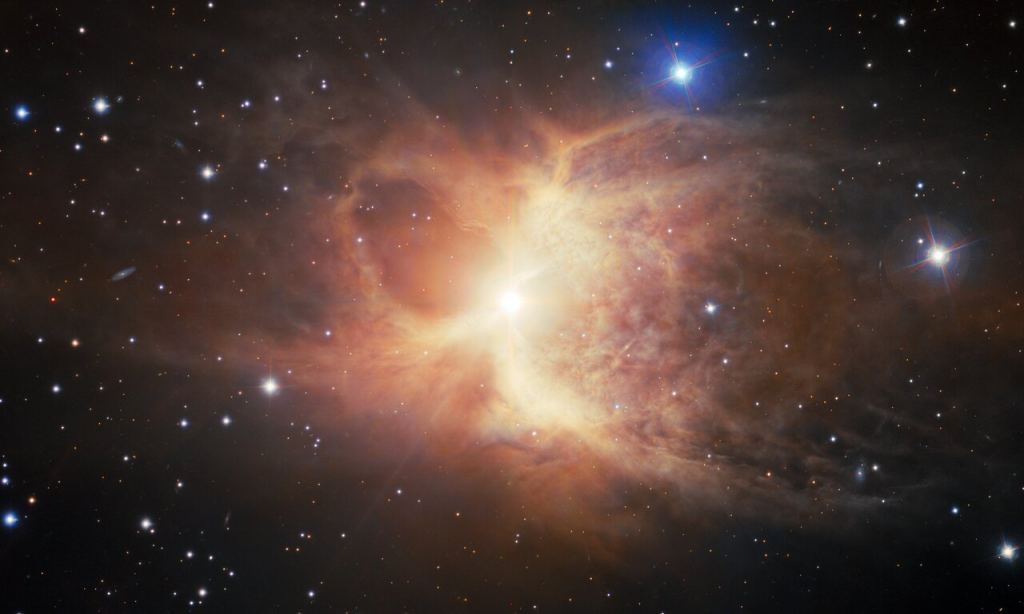The Gemini South telescope has captured a new image of the glowing nebula IC 2220. Nicknamed the Toby Jug Nebula, this object got its name because it looks like an old English jug. But no fun drinking games are happening here.
The star at the center is a dying red giant with five times the mass of the Sun. In its death throes, the star has blasted off its outer layers into space, creating nearly symmetrical loops of gas and dust. But why the twin loops? Astronomers think it has a companion star that helped channel its outburst. However, the companion might have been shredded as the main star expanded.
The red-giant star is named HR3126, and the clue to its shredded (former) companion lies in an extremely compact disk of material surrounding HR3126. The material created by the destruction of this star may have triggered the formation of the surrounding planetary nebula.

A planetary nebula is a region of cosmic gas and dust formed from the cast-off outer layers of a dying star. Despite their name, planetary nebulae have nothing to do with planets. The term was likely first coined the 1780s by astronomer William Herschel, who noted their seemingly round, planet-like shape when observed through early telescopes.
IC2220 is located about 1,200 light-years away in the region of the Carina constellation. This is a special kind of planetary nebula called a reflection nebula, which is created when light from a star is scattered or reflected off a neighboring dust cloud.
When stars like HR3126 are near the end of their lives, they expand to form red giants. These types of stars have intermediate mass, which is greater than 80% of the Sun’s mass, but less than eight times its mass. The dying star will continue to expel gas, while simultaneously the remaining core of the star contracts and temporarily begins to radiate energy again. This energy causes the expelled gas to ionise, where the atoms and molecules in the gas become charged and begin to emit light.
Astronomers say that this end-of-life phase of red giant stars is relatively brief, and the celestial structures that form around them are rare, making the Toby Jug Nebula an excellent case study into stellar evolution.

In about five billion years from now, when our Sun has burned through its supply of hydrogen, it too will become a red giant and eventually evolve into a planetary nebula. We can only hope that in the very distant future, another faraway civilization will view the vibrant remains of our Sun and Solar System through their telescopes.

